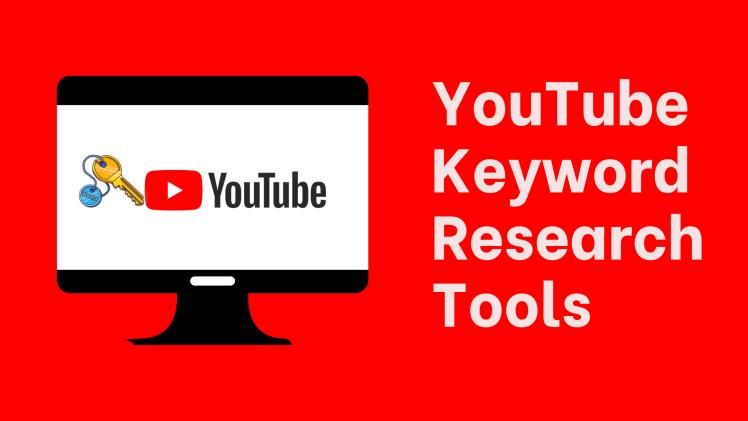YouTube is the second-largest search engine in the world after Google. Statistically speaking, YouTube hosts more than 2 billion users monthly or more than 30 million users daily as well as over one billion hours of videos consumed daily and this is organic traffic. For content developers, marketers, strategists, or other roles involving the distribution of content, YouTube searches present one huge opportunity to explore when planning content. YouTube is not just a place for monitoring trending keywords but also a channel for building your brand online.
YouTube operates almost similar to Google in that it is also a search engine that uses a search algorithm to display customized search engine results to its audience. If you intend to explore YouTube for content planning you will most likely be considering an SEO strategy. First, let’s look at why you need a content plan.
Why do you need a content plan?
A content plan will help you come up with a basis upon which you can define the contribution that your content will make to your brand’s objectives. A content plan helps you produce content that falls in line with your audience engagement and brand exposure goals. In an age where relevance and timeliness are crucial, getting the right message to the right audience at the appropriate time should be every content marketer’s goal. Ultimately, content planning should be more important to you than content production because the former determines the success of the latter.
What makes a good content plan?
A good content plan should include:
- Your objectives
- Your target audience
- Type of content to be created
- Distribution schedule
- Evaluation metrics
How to plan your content using YouTube search
While they are both search engines, YouTube differs a bit from Google because YouTube content has a longer shelf life compared to content, say, on your blog or website which you may be forced to update from time to time to remain relevant. Thus YouTube has a great potential for attracting traffic. Even so, audience engagement plays a critical role in building your brand and so should not be traded with merely distributing content.
Here is a simple guideline on how to plan your content around your YouTube search
1.Your content strategy
What is your content strategy? Your content plan should align with your content strategy. Remember that content strategy involves the planning, development, distribution, and management of content.
A content strategy should define the following:
- Your target audience
- The problem your brand is solving
- Your goals
- Your competition
- Available resources
- How much do you intend to invest
- metrics for measuring results
The why of your content strategy
Here you need to objectively think about why you are creating content. At the very least, your purpose for creating content should be either to solve a problem you have identified in your target audience or meet a different but specific need.
How about asking yourself the following essential questions;
- What are the demographics of my target audience?
- What will my audience gain from my content?
- What value can I add to my content?
Based on this information, you will have laid a foundation for your YouTube search.
The how of your content strategy
There are three content categories on Youtube Marketing Guide . Help content includes tutorials and how-to content, hub content which includes educative content around a particular topic, and hero content which refers to attention-grabbing content used to create awareness or visibility for a brand.
With this understanding, which category of content aligns with the content you intend to push to your audience. Knowing the different categories will help you narrow your YouTube search to focus only on the content and keywords that will help you structure an effective plan around the content you need to create within a certain period.
Also, you can consider creating original content for your brand, collaborating with others to create content, or building on existing content.
2. Keyword search on YouTube
One often underutilized SEO keyword search channel is YouTube keyword search. Finding video keywords to improve your SEO is vital whether you are creating content for your YouTube channel or your website. Google Trends is a great tool that you can take advantage of to know which topics are trending around your niche and how you can make use of them to plan and create relevant content for your audience.
3. How can you add value to the content you are developing
Remember that the value you add to your content is the value that your audience will see in your content versus that of the competition. This very aspect is what you can use to enhance your brand identity and visibility. Some brands may opt to engage their audience through feedback after the consumption of their content. This way, it is possible to identify their audience needs to plan for future content and understand their audience well enough to curate relevant content.
Whichever way one looks at it, engaging the audience directly or indirectly is part of the whole equation. Ultimately, a satisfied audience is a loyal audience. Therefore, it is vital to choose an appropriate approach to engaging with the audience effectively. If you are on a YouTube search mission, take a peek at how channels with the highest traffic engage with their audience and pick your ideas or keywords from there.
4. Your content schedule
A content schedule is a critical element of a content plan. After identifying trending topics and keywords around your niche, you will already have an idea about what your future content will address. Next, you need to come up with a systematic plan of when and how you will push your content to your audience through whichever channel. What span of time will your plan cover? A week? A month? A Quarter?
At this point, it is important to note that it’s not really about the volume but how consistent you are in delivering quality and relevant content to your audience. This is where a content schedule comes into play and creating a balance between quantity and quality of content and one that you can sustain in the long term is important.
Tools you can use for your YouTube Searches
1. Google trends
Google Trends will not only provide insight on the rise and decline of interest in a topic on YouTube over some time, but it also allows you to compare the performance of two or more keywords. When planning your content, you will know which content to prioritize based on keywords as well as have an idea about when your keyword will perform well and schedule them around that time. This is also a great tool when you want to discover new ideas of the content that you need to curate.
2. YouTube Trends dashboard
This dashboard gives you information about the most popular videos in the U.S and across the world so you gauge the kind and quality of content that your potential audience will be most interested in consuming.
3. Ubersuggest
Ubersuggest is a free chrome extension SEO tool that provides users with data on keyword volume, CPC, and insights for keywords from sites like Google, YouTube, Amazon, and others.
4. Ahrefs Keywords Explorer
This explorer runs your keyword search over a massive database of YouTube keywords. It will furnish you with clickstream, click volume, click percentage, search volume, and more information on the keywords that you are interested in on YouTube.
5. YouTube analytics
If you are planning content for your YouTube channel, YouTube analytics is most certainly a handy tool that provides you with insight about your audience, the content that they interact with more, and shared videos among others. Knowing where their interest lies helps you to plan and curate future content.

